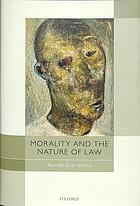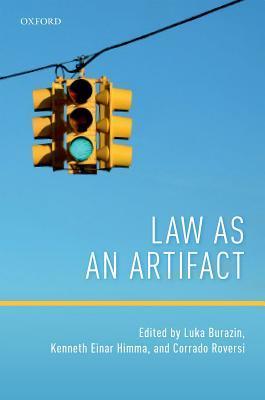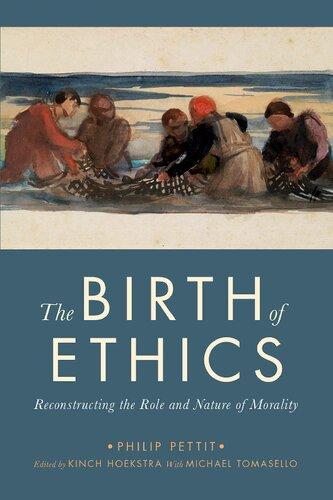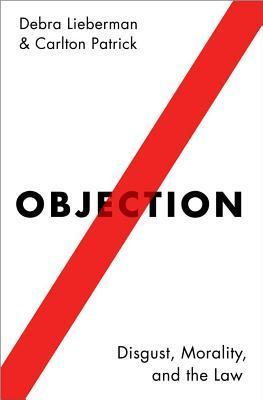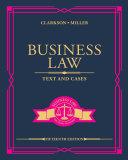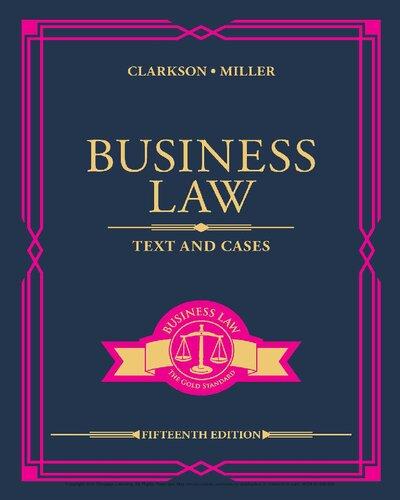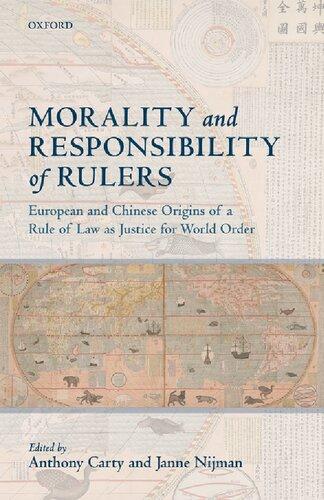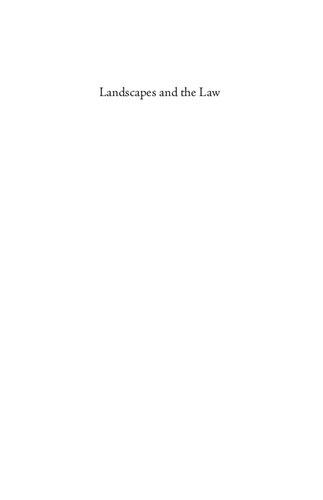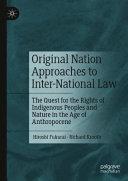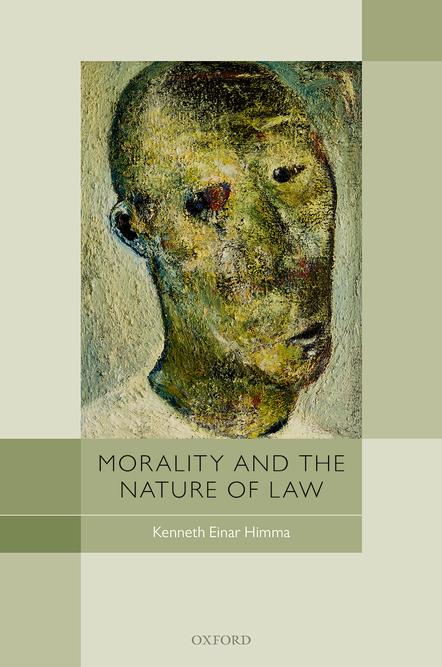Morality and the Nature of Law
KENNETH EINAR HIMMA
Great Clarendon Street, Oxford, OX2 6DP, United Kingdom
Oxford University Press is a department of the University of Oxford. It furthers the University’s objective of excellence in research, scholarship, and education by publishing worldwide. Oxford is a registered trade mark of Oxford University Press in the UK and in certain other countries © Kenneth Einar Himma 2019
The moral rights of the author have been asserted
First Edition published in 2019
Impression: 1
All rights reserved. No part of this publication may be reproduced, stored in a retrieval system, or transmitted, in any form or by any means, without the prior permission in writing of Oxford University Press, or as expressly permitted by law, by licence or under terms agreed with the appropriate reprographics rights organization. Enquiries concerning reproduction outside the scope of the above should be sent to the Rights Department, Oxford University Press, at the address above
You must not circulate this work in any other form and you must impose this same condition on any acquirer
Crown copyright material is reproduced under Class Licence Number C01P0000148 with the permission of OPSI and the Queen’s Printer for Scotland
Published in the United States of America by Oxford University Press 198 Madison Avenue, New York, NY 10016, United States of America
British Library Cataloguing in Publication Data Data available
Library of Congress Control Number: 2018961313
ISBN 978–0–19–872347–9
Printed and bound by CPI Group (UK) Ltd, Croydon, CR0 4YY
Links to third party websites are provided by Oxford in good faith and for information only. Oxford disclaims any responsibility for the materials contained in any third party website referenced in this work.
This volume is dedicated to my mom, who has taught me more about courage, patience, honor, and kindness than anyone else. I have never known anyone who has faced so much adversity with so much grace and elegance. She is and will always be an inspiration to me.
Preface
This volume turned out to be quite different from what I had expected. When I first contemplated writing it, I thought that I would just take a number of previously published papers and do some minor edits to make them suitable as chapters of the volume. I figured that I would have to write no more than two new chapters, one introductory and the other purely expository, as I had previously published papers on the topics of all but two of the issues I had planned to address. Then I set about reading those papers with an eye toward revising them, and quickly realized that I had overestimated the quality of my published work. Each was riddled with errors that were so glaringly bad that I was appalled and embarrassed that I had published them.
It is important to be honest about one’s mistakes, so I want to own them with the kind of public apology one hopes never to have to make: if you read these papers, I sincerely apologize for having wasted your time. From where I now sit, I think there were ideas worth developing in all of them, but I let them go much too quickly; as written, those papers were not worth reading. While there is nothing I can do to get them back, I believe that I have learned from my mistakes.
Obviously, I cannot claim that this volume is free from errors. What I can say is that I have spent much more time with each of these chapters than I spent on any of my previously published work. I have always felt uncomfortable imposing on others for detailed comments for various reasons; that has not changed and likely will not change. Even so, I am hopeful that the quality of the work here is significantly better than anything I have produced up to now.
That said, I would like to acknowledge the following people who have helped and encouraged me over the years: Matthew Adler, Larry Alexander, Brian Bix, Evgeny Borisov, David Brink, Carlos Bernal, Luka Burazin, Thomas Bustamante, André Coelho, Jules Coleman, Jennifer Corns, Jorge L. Fabra, Kenneth Ehrenberg, Imer B. Flores, John Gardner, Leslie Green, Mark Greenberg, Douglas Husak, Miodrag Jovanović, Nina Kaneda, Matthew Kramer, Massimo La Torre, C. Stephen Layman, Brian Leiter, Lucas Miotto, Adam Moore, Ronald Moore, Mark Murphy, Aleš Novak, Vitaly Ogleznev, Stephen Perry, Joseph Raz, Andrea Romeo, Corrado Roversi, Frederick Schauer, Stefan Sciaraffa, Scott Shapiro, Lawrence Solum, Bojan Spaić, Horacio Spector, Juan Pablo Sterling Casas, Noel Struchiner, Valeriy Surovtsev, William Talbott,
Jeremy Waldron, and Wilfrid Waluchow. In addition, I would like to thank the following people who have commented on some of the chapters, discussed some of the ideas with me, or helped me in other ways: Claudia Ceniceros, Andrew Jordan, Milena Jovanović, Marija Momic, Zrinka Mrkonjić, Juan Jose Otalvares, Svan Relac, and Ashley Robles. I would also like to acknowledge the following universities for having supported my work in one form or another over the years: National Autonomous University of Mexico (UNAM), Seattle Pacific University, Tomsk State University, University of Washington, University of Belgrade Faculty of Law, and University of Zagreb Faculty of Law.
Finally, I want to thank Maria Elias Sotirhos for everything that she has done for me over the nearly thirty years we have been together. She has been astoundingly supportive, as just about anyone who knows both of us can attest, putting up with more than any partner can reasonably be expected to put up with. Maria has painstakingly proofread every chapter of the book, despite utterly, unrelentingly, and, at times, loudly despising its topic. I cannot imagine how people go through life without the sort of unconditional love and kindness that she gives so naturally. I adore you, my boo.
4. Inclusive Positivism and the Arguments from Authority
1. Epistemic and practical authority
2. Practical authority as grounded in a claim of right
3. Power, de facto authority, legitimate authority, and law
4. Conceptual relations between law and authority
5. The service conception of authority
6. Practical authority and the possibility of moral criteria of validity: The Arguments from Authority
6.1 Law’s claim of legitimate authority: The general strategy of the Arguments from Authority
6.2 The Authority Thesis, the Preemption Thesis, and inclusive positivism
6.3 The Authority Thesis, NJT, and inclusive positivism
6.4 The directives of practical authority as expressing its view about what ought to be done
7. Looking ahead: Evaluating the Arguments from Authority
5. Law’s Claim of Legitimate Authority
1. Understanding the content of a claim of legitimate authority
2. Can law make claims? Two possible interpretations
3. Deriving law’s claim of legitimacy from the beliefs and claims of officials
4. Do the beliefs and claims of officials imply a claim of legitimacy?
4.1 The use of the language of rights and duties
4.2 Officials’ belief that they have a right to impose obligations
4.3 Officials’ claim that subjects owe allegiance
4.4 Designation of officials as “authorities”
4.5 Officials’ claim that subjects have an obligation to obey the law
4.6 The claims taken together
6. Authority, Moral Criteria of Validity, and Conceptual Confusion
1. Identifying the content of our conceptual practices
2. The Identification Thesis and the Arguments from Authority
3. Could law’s claim of authority be conceptually confused?
4. Do most officials accept the Identification Thesis?
7. To Whom the Rules Apply: Norm Guidance and the Incorporation Thesis
1. The guidance function of law
2. Motivational and epistemic guidance
3. The Practical Difference Thesis, the rule of recognition, and valid legal norms
4. Law and the guidance of non-official behavior 176
4.1 The first Guidance Argument 177
4.2 Can norms valid in virtue of moral merit epistemically guide non-official behavior? 178
4.3 Can subjects learn of their legal obligations regarding nonofficial behavior from the rule of recognition? 179
4.4 Must subjects be able to learn of their legal obligations regarding non-official behavior from the rule of recognition? 182
4.5 A methodological objection: The argument is illicitly grounded in contestable claims about morality 184
5. Law and the guidance of official behavior 186
5.1 The second Guidance Argument 186
5.2 Can a valid legal norm governing non-official behavior motivationally guide a judge deciding a case under that norm? 188
6. Revisiting the Arguments from Authority: To whom the rules apply 193
8. The Conceptual Possibility of Moral Criteria of Legal Validity 197
1. General methodological considerations 197
2. Prerequisites for a model vindicating the Incorporation Thesis 200
2.1 The model must describe a world that is nomologically possible 200
2.2 The modeled system must meet Hart’s minimum conditions for the existence of a legal system 201
2.3 The modeled system must incorporate the minimum content of natural law 202
2.4 The model must satisfy the service conception of authority 203
2.5 The norms of the system must be metaphysically capable of motivationally and epistemically guiding the behavior they govern 203
2.6 The model must be plausibly interpreted as incorporating moral criteria of validity 205
2.7 The model should be incompatible with an exclusivist interpretation 205
3. Specification of a model vindicating the Incorporation Thesis 206
3.1 The modeled world is nomologically possible 206
3.2 The subjects are accidentally infallible 206
3.3 A model of an institutional normative system with moral criteria of validity 209
4. Vindicating the Incorporation Thesis: The modeled system is a legal system 210
4.1 The system satisfies Hart’s minimum conditions for the existence of a legal system 211
4.2 The system contains norms that incorporate the minimum content of natural law 212
4.3 The system satisfies the service conception of authority
4.3.1 The system has de facto authority 212
4.3.2 The norms are capable of expressing the authority’s view about what right reason requires and of replacing the subjects’ views about what right reason requires 213
4.3.3 Is it metaphysically possible for subjects to better comply with what right reason requires by following the authority’s view of what right reason requires than by following their own views of what right reason requires?
214
4.4 The modeled system is capable of performing law’s conceptual function of regulation through norm-governance and norm guidance 216
4.4.1 The rule of recognition is metaphysically capable of motivationally and epistemically guiding official behavior
4.4.2 The norms valid under the rule of recognition are metaphysically capable of motivationally and epistemically guiding non-official behavior
216
218
4.5 The system precludes an exclusivist interpretation 220
5. Why all the fuss? The probability of inclusive legal systems in our world
Introduction
What Do You Mean by “Law,” Anyway?
The notion of law that is typically the focus of conceptual jurisprudence applies to all and only institutional systems of norms; it is clearly part of the nature of law that it is institutional. As such, the concept-term “law” picks out paradigms of institutional systems of both municipal law and international law. These systems regulate different kinds of behavior: institutional systems of municipal law, as a conceptual matter, necessarily involve state regulation of both official and non-official behavior while institutional systems of international law necessarily involve multinational regulation of only official behavior on the part of nation-states. While it might be conceptually possible to have systems of international law that regulate non-official behavior, it is not conceptually necessary that they even purport to regulate nonofficial behavior.1
But this general notion of law also applies to institutional normative systems that are like and unlike these legal systems in theoretically significant ways. Like systems of municipal and international law, a system of religious law has something fairly characterized as a rule of recognition for recognizing, applying, or enforcing norms that govern the behavior of members of the relevant community, as well as a set of authorized sanctions, such as excommunication, reasonably contrived to induce compliance among subjects otherwise disposed to violate norms of the system. Unlike systems of municipal and international law, a system of religious law is necessarily concerned
1 A federal system that brings together subnational entities into a unified national entity is somewhat more difficult to characterize. Conceived as conceptually independent of the subnational entities it unites, a federal legal system more resembles systems of international law than it does systems of municipal law in virtue of necessarily containing only norms governing the official behavior of the states. But conceived as conceptually dependent upon the subnational entities it brings together, it incorporates the law of those subnational entities and hence more resembles a municipal system than it does systems of international law.
Morality and the Nature of Law. © Kenneth Einar Himma 2019. Published 2019 by Oxford University Press.
with articulating, codifying, and enforcing a shared morality deemed to be the canon of the faith.
Although there is something to be gained in our understanding of law by explicating the content of a concept that applies to both systems of religious law and to systems of municipal and international law, there is also something to be lost. On the one hand, systems of religious law have much in common with systems of municipal and international law; that is why the term “law” can be taken to refer to both types of system. On the other hand, systems of religious law differ in theoretically significant ways from systems of municipal and international law. To pursue an explication of a general notion of law that applies equally to each will of necessity suppress theoretically significant features of one that distinguish it from the other and will hence result in a theory that under-explicates both.
Another potential drawback to focusing on a general notion that applies to both subtypes is that it can lead to confusion with respect to our understanding of each subtype. Consider H.L.A. Hart’s puzzling remarks about the conceptual function of law:
[W]hereas Dworkin’s interpretive legal theory in all its forms rests on the presupposition that the point or purpose of law and legal practice is to justify coercion, it certainly is not and never has been my view that law has this as its point or purpose. Like other forms of positivism my theory makes no claim to identify the point or purpose of law and legal practices as such; so there is nothing in my theory to support Dworkin’s view, which I certainly do not share that the purpose of law is to justify the use of coercion. In fact, I think it quite vain to seek any more specific purpose which law as such serves beyond providing guides to human conduct and standards of criticism of such conduct.2
These remarks are usually interpreted as asserting that the conceptual function of law is to guide behavior, but a more careful look indicates that Hart is skeptical about the very possibility of identifying a distinctive conceptual function of law. It is not just that he states “[l]ike other forms of positivism, my theory makes no claim to identify the point or purpose of law and legal practices as such”; it is also that he thinks it “quite vain” to say anything more about law’s conceptual function than that it “provides guides to human conduct.”
Notice that the claim that law’s conceptual function is to guide behavior would not distinguish systems of municipal or international law from systems of religious law. Although both systems are concerned with doing something
2 H.L.A. Hart, The Concept of Law 3rd Ed. (Oxford: Oxford University Press, 2012), 248–49. Hereinafter CL
that involves guiding behavior through the governance of norms, legal norms and norms of religious law differ, as a conceptual matter, in content because they are concerned to achieve different things. In our world, municipal and international law seek to diminish the likelihood of violent conflicts among subjects so that they can reap the social benefits of living together in a community; the norms of religious law seek to enforce moral norms grounded in theological commitments that help to distinguish one faith tradition from another. If the concern is to explicate all of these various types of norm, all that can be said about law’s conceptual function is that it is concerned to regulate behavior through norm-guidance.
But if the concern is to explicate our conceptual practices with respect to the nature of law as it applies to systems of municipal and international law, as I take it to be, the failure to distinguish municipal and international law from other systems of law is far from innocuous. The claim that the conceptual function of an automobile is to transport persons or things from one destination to another is problematic because it fails to distinguish automobiles from airplanes. Just as any conceptual theory of an automobile that fails to identify a conceptual function that distinguishes automobiles from airplanes is problematic for that reason, so is a conceptual theory of law that fails to identify a conceptual function that distinguishes systems of municipal and international law from other systems of law.
Pursuing an explication of the most general concept of law can lead to other confusions. If one refers to the rules of a chess association as “law,” as the World Chess Federation (WCF) does, then it is utterly uncontentious that positivism’s Separability Thesis is true; if any system of norms properly characterized as “law” is artifactual all the way down in the sense that the content of its norms is fully manufactured by its officials, the norms of a chess association are.3 Although there are good reasons to reject the conceptual claim that there can be no unjust laws, it would be silly to argue that the system of WCF rules suffices to establish the Separability Thesis and thereby to refute a view of historic importance that has been traditionally associated with classical natural law theory.
Although it is perfectly legitimate to pursue a conceptual theory that applies as much to chess and religious law as to municipal and international law, this is not the approach I take here. This volume is concerned exclusively with jurisprudence as the term is used among attorneys, judges, and law students. This usage is properly applied only to matters arising within systems of municipal law and international law. The approach here focuses, like most
3 Handbook of the World Chess Federation, available at https://www.fide.com/component/handbook/?id=124&view=article
scholarly inquiries concerning the nature of law, on the practices associated with law as it pertains to political entities like states, but it assumes that these systems have a metaphysical nature that is related to but distinct from the nature of other kinds of systems of law.
None of this should be taken to deny that explicating the general concept that applies equally to municipal law, religious law, and the rules of a chess association is a worthwhile endeavor. The linguistic conventions we adopt define a conceptual framework that not only gives structure to the world of our experience but also says something important about us. An analysis of the more general concept of law hence conduces to our collective understanding of who we are and what we value. That our ordinary usages permit the application of the term “law” to systems that are as different from one another as municipal law, chess law, and religious law tells us something important about ourselves. But I have no urgent interest in the conceptual nature of chess law or religious law; what I do care a lot about is the nature of the type of law studied in law schools and practiced in systems of municipal and international law—and that is the exclusive concern of this volume.
There is one more feature of the approach adopted here that should be noted. I am of the view that the substance of a conceptual theory is deeply conditioned by the methodology that underwrites the analysis. The analysis is explicitly grounded in the linguistic and legal practices that inform our ordinary usage with respect to the term “law” and is exclusively concerned with that usage. The ultimate touchstone, then, for evaluating the claims I make about the concept of law is whether they conform to ordinary usage as fleshed out to expose not only the underlying social practices that define them but also the philosophical presuppositions that ground those practices.
Relationships Between Law and Morality
It is not implausible to think that the project of general jurisprudence was partly motivated by disputes about conceptual relationships between law and morality. Jeremy Bentham’s and John Austin’s legal positivism was articulated partly in response to William Blackstone’s view that it is a conceptually necessary condition for a norm to count as law that its content not conflict with objective standards of justice. Bentham and Austin denied this claim, arguing instead that the content of the law is fully determined by the commands of a sovereign willing and able to back them with the threat of a sanction.1
In this chapter, I distinguish three types of inquiry about law in order to explain the conceptual project with which this volume is concerned. Then I articulate the two conceptual views about morality and the nature of law that comprise the focus of this volume. First, I explain positivist and antipositivist views with respect to whether it is a conceptual truth that the criteria of legal validity include moral constraints on the content of law. Second, I explain the dispute between inclusive and exclusive positivists with respect to whether it is conceptually possible for a legal system to have content-based moral criteria of validity.
Finally, as the intellectual legitimacy of the project of conceptual jurisprudence has recently come under fire for not having practical consequences or being “interesting” and hence as not being worth doing, I say something brief in defense of the project. My defense, such as it is, will be somewhat modest. I will dispute neither the claim that right answers to conceptual questions lack significant practical consequences nor the claim that conceptual theorizing is uninteresting.
What I will do is argue that the claim that conceptual jurisprudence should not be done is either unclear or false. On the one hand, if the claim that
1 See, generally, Jeremy Bentham (1782). Of Laws in General Ed. H.L.A. Hart (London: Athlone Press, 1970); and John Austin (1832). The Province of Jurisprudence Determined Ed. Wilfred E. Rumble (Cambridge: Cambridge University Press, 1995). For an outstanding discussion of the history of these views, see Brian H. Bix, Jurisprudence: Theory and Context 7th Ed. (Durham, NC: Carolina Academic Press, 2015), Chapter 5. Hereinafter JTC.
Morality and the Nature of Law. © Kenneth Einar Himma 2019. Published 2019 by Oxford University Press.
Relationships Between Law and Morality
conceptual jurisprudence should not be done is a moral claim, it is false. From the standpoint of morality, there are many things any legal scholar can do that would make the world a much better place than writing articles for academic journals; whatever difference there is between the moral value of writing in conceptual jurisprudence and that of writing in other areas of legal scholarship amounts to little. On the other hand, if it is not a moral claim, then it is not clear exactly what it amounts to.
1. Three types of inquiry about law
A frequent area of interest to those who theorize about law concerns the various relationships between law and morality. To understand these relationships, it is helpful to distinguish three kinds of inquiry concerning morality and law. The first is empirical in the sense that it is concerned with identifying certain contingent relationships in our world having to do with law and morality. One can ask, for example, whether officials of some existing legal system usually consider what they believe are moral requirements in making decisions about how to create, adjudicate, and enforce the law. As this question concerns the motivations of officials, addressing it requires going into the world and observing what officials say and how they behave in discharging their functions as officials.
The second kind of inquiry is normative in the sense that it is concerned with determining, as a matter of morality, how officials should behave in discharging their duties or what content the law should have. It is clear both that laws should be just and that legal systems should be legitimate; and the content of the law and legal practices should satisfy the appropriate moral requirements. Normative inquiry, then, is concerned with determining whether some existing law, legal system, or legal practice satisfies the relevant demands of morality.
The third kind of inquiry is conceptual in the sense that it seeks to describe the content of the relevant concept and hence to explicate the nature of the thing picked out by the concept. Conceptual claims purport to identify the properties that distinguish things that are members of the reference class of the concept-term from things that are not. For example, the concept-term “bachelor” is generally thought to apply only to things that are unmarried and men. The instantiation of all these properties distinguishes things that are bachelors from things that are not bachelors; married things, for example, do not fall within the reference class of the concept-term “bachelor.”
As traditionally conceived, the goal of conceptual analysis is purely descriptive. Thus conceived, the goal is simply to explicate, or describe in a philosophically rigorous way, the content of the relevant concept as it is grounded in those social practices that determine the application-conditions of the relevant concept-term. Conceptual analysis seeks to describe—rather than to prescribe—the content of the relevant concept and is hence concerned to provide an account of what the content of the concept is, and not of what the content of the concept should be.
Explicating the content of a concept requires identifying those properties that are conceptually necessary for something to fall under the concept in the following sense: if p is a conceptually necessary property for being an A, then it is conceptually impossible to be an A without instantiating p. To explicate the content of a concept is to identify those properties essential to the thing picked out by the corresponding concept-term. Being unmarried, for example, is a conceptually necessary condition for being a bachelor or, otherwise put, is essential to bachelorhood. Insofar as these conceptually necessary properties are essential properties of the thing picked out by the concept, they also define the nature of the thing picked out by the relevant concept.
As is evident from the talk of necessary properties, the traditional methodology for conceptual analysis trades in the language of modal logic, utilizing the modalities of necessity and possibility, along with possible-worlds talk. For example, the conceptual truth that bachelors are unmarried entails that there are no conceptually possible worlds in which there is someone who is both married and a bachelor. This latter claim is logically equivalent to the claim that in every conceptually possible world all bachelors are unmarried. Accordingly, conceptual inquiry with respect to the nature of law is concerned with determining what is true of law in some, none, or every conceptually possible world.
It is important to note that the character of the relevant modal claims about the nature of a thing depend on the logical relationship between the content of the concept and the linguistic conventions governing the use of the relevant concept-term. If, on the one hand, these modal claims presuppose a particular conceptual framework grounded in contingent linguistic practices, then the character of the resulting modal claims would aptly be described as “conditionally” necessary, and not as “absolutely” necessary, since the underlying practices can change over time. If, on the other, these modal claims are thought not to be grounded in the linguistic practices that establish the application-conditions for using the relevant concept-term, then the character of the resulting modal claims would aptly be described as “absolutely” necessary.
Relationships Between Law and Morality
Both of the accounts given above harmonize with the notion of a priori justification or knowledge, properly understood. To say that a proposition can be justified or known a priori does not entail that it can be justified or known independently of all empirical experience. To say that a proposition can be justified or known a priori is to say that it can be justified or known independently of any empirical experience not needed to understand the meaning of the relevant terms. Accordingly, on the assumption that conceptual jurisprudence is a priori, its focus on identifying the contingent linguistic practices that determine the lexical meanings of words coheres with the character of a priori knowledge. Likewise, the claim that conceptual claims are conditionally necessary in the sense of being dependent on contingent linguistic practices also coheres with the idea that they are a priori in the sense that they can be known or justified independently of any empirical experience not needed to understand the meaning of the relevant terms.
It is sometimes thought that conceptual analysis, conceived as being grounded in the linguistic practices that define the lexical meaning of the relevant conceptterm, involves little more than providing a dictionary definition, but this is mistaken. Thus conceived, conceptual theorizing begins from core intuitions about how to use a word that are conditioned by its lexical meaning but goes much deeper than lexicography insofar as it attempts to identify and theorize the deeper philosophical commitments these intuitions imply or presuppose. While this might or might not be a distinctively philosophical enterprise, it goes well beyond the empirical task of merely identifying shared intuitions or core features of our linguistic practices, which is the job of lexicographers.
Compare what lexicographers have to say about the word “law” with what Hart has to say by way of explication of the concept of law. Oxford American Dictionary defines “law” as follows:
law | noun 1 (often the law) the system of rules that a particular country or community recognizes as regulating the actions of its members and may enforce by the imposition of penalties: they were taken to court for breaking the law | a license is required by law | [as adj.] law enforcement.
• an individual rule as part of such a system: an initiative to tighten up the laws on pornography.
• such systems as a subject of study or as the basis of the legal profession: he was still practicing law | [as adj.] a law firm . . . .
• a thing regarded as having the binding force or effect of a formal system of rules: what he said was law.
Notice how much of what Hart’s theory addresses is omitted by the lexical definition.2 First, there is no mention here of many pieces central to Hart’s analysis: the definition says nothing about social practices; the rule of recognition; secondary and primary rules; legal validity; and many other theoretically salient features of law. Second, the lexicographer’s job is accomplished in a few lines whereas Hart took more than two hundred pages to give an analysis of the nature of law in The Concept of Law. If Hart starts from shared views about the meaning of “law,” he is doing something radically different from what lexicographers do—and going much deeper into what law ultimately is.
This book is a piece of traditional conceptual analysis that conceives the project as grounded in the contingent linguistic practices that determine the lexical meanings of the relevant concept-terms, but it should not be construed as disparaging the other types of inquiry concerning law or other methodological principles that have been deployed in the service of conceptual analysis. I choose this methodology simply because it is the one that has been adopted by the theorists whose work I find most interesting and with whose work I wish to engage.
As the concern of this book is to explicate certain relationships between the concepts of law and morality, I begin by briefly describing the positions that are the focus of this volume: (1) the position that it is a conceptual truth about law that the criteria of validity include moral constraints on the content of law (i.e. natural law theory); (2) the position that it is a conceptual truth that the criteria of validity are exhausted by source-based criteria (i.e. exclusive positivism); and (3) the position that it is conceptually possible for a rule of recognition to incorporate moral criteria of validity (i.e. inclusive positivism).
2. Natural law theories
It would be helpful to partition conceptual theories of law into two mutually exclusive and jointly exhaustive categories: positivist and anti-positivist theories. Positivists hold that the content of law is an artifact that is wholly manufactured through certain social activities. Both the norms that regulate the non-official behavior of subjects and those that regulate the behavior of officials acting as legislators, judges, and executives are social artifacts. Since there are thus no conceptually necessary moral constraints on what counts
2 See, generally, H.L.A. Hart, The Concept of Law 3rd. Ed. (Oxford: Oxford University Press, 2012). Hereinafter CL
as valid law, the content of the validity criteria is determined entirely by the social activities of those who make, adjudicate, and enforce what they characterize as law.
In contrast, so-called anti-positivist theories are traditionally interpreted to deny that the content of the validity criteria is fully determined by our practices. Thus construed, natural law theories assert that it is a conceptual truth that the criteria of validity include moral constraints on the content of valid law. On this view, it is a conceptually necessary condition for a norm to count as a valid law that its content conforms to some set of objective moral standards. Accordingly, the social processes through which people manufacture law do not fully determine the content of the validity criteria; no matter what people do by way of recognizing, applying, or enforcing what they characterize as “law,” there are moral standards that constrain what really counts as law in a legal system.
Classical natural law theory is hence traditionally interpreted as asserting that “an unjust law is no law at all” (lex iniusta non est lex). While natural law theory goes back at least as far as Cicero, the most influential early advocate of this view is Aquinas, who appears to endorse it in the following passage:
As Augustine says, “that which is not just seems to be no law at all”; wherefore the force of a law depends on the extent of its justice. Now, in human affairs a thing is said to be just from being right according to the rule of reason. But the first rule of reason is the law of nature, as is clear from what has been stated above. Consequently, every human law has just so much of the nature of law is it is derived from the law of nature. But if, in any point, it deflects from the law of nature, it is no longer a law but a perversion of law.3
Aquinas’s view is subsequently picked up by Blackstone, who expresses it in language quite similar to Aquinas’s:
This law of nature, being coeval with mankind and dictated by God himself, is of course superior in obligation to any other. It is binding over all the globe, in all countries, and at all times: no human laws are of any validity, if contrary to this; and such of them as are valid derive all their force, and all their authority, mediately or immediately, from this original.4
While the traditional natural law view has been largely construed to assert that it is conceptually impossible for there to be an unjust law, the passages
3 St. Thomas Aquinas, Summa Theologiae, Prima Secundae Partis Q. 95, Art. 2; available at: http://www.newadvent.org/summa/2095.htm
4 Sir William Blackstone, “Of the Nature of Laws in General,” Commentaries on the Laws of England—Book I: Of the Rights of Persons (Oxford: Oxford University Press, 2016), 35. Hereinafter COM
above are ambiguous. Aquinas is concerned with the force of law, which can plausibly be interpreted as referring to the moral force of law. Similarly, Blackstone’s references to validity and authority are plausibly construed as referring to moral validity and moral authority. These passages can be construed as asserting no more than that an unjust norm posited as law would not generate a moral obligation to obey and might be such that morality obligates us to disobey it. On this interpretation, the claim would be that an unjust posited norm is not morally binding, and not that an unjust posited norm is not legally binding.
There are plausible reasons to think that Blackstone is making only claims about moral validity and moral authority. The discussion that precedes the passage quoted above is unambiguously concerned with what we are morally obligated to do, and not with what we are legally obligated to do. Consider, for example, the following statement, which precedes the last quoted remark of Blackstone’s by four paragraphs:
Man, considered as a creature, must necessarily be subject to the laws of his creator, for he is entirely a dependent being. A being, independent of any other, has no rule to pursue, but such as he prescribes to himself; but a state of dependence will inevitably oblige the inferior to take the will of him, on whom he depends, as the rule of his conduct: not indeed in every particular, but in all those points wherein his dependence consists. This principle therefore has more or less extent and effect, in proportion as the superiority of the one and the dependence of the other is greater or less, absolute or limited. And consequently as man depends absolutely upon his maker for everything, it is necessary that he should in all points conform to his maker’s will (COM 33–34).
The deontic locutions used in this passage (such as “must necessarily be subject,” “obliged,” and “should in all points conform”) are unquestionably moral in character. It is clear that Blackstone is not concerned with what is prudentially or legally normative—although one certainly has prudential reasons to obey God’s will if eternal torment is the consequence of disobedience. Blackstone does not begin to discuss “human law” for several paragraphs after the last two quotes:
Upon these two foundations, the law of nature and the law of revelation, depend all human laws; that is to say, no human laws should be suffered to contradict these . . . . To instance in the case of murder: this is expressly forbidden by the divine, and demonstrably by the natural law; and from these prohibitions arises the true unlawfulness of this crime. Those human laws, that annex a punishment to it, do not at all increase its moral guilt, or super-add any fresh obligation in foro conscientiae to abstain from its perpetration. Nay, if any human law should allow or enjoin us to commit it, we are bound to transgress that human law, or else we must offend both the natural and the divine. But with regard to matters that are in themselves indifferent, and are not
Relationships Between Law and Morality
commanded or forbidden by those superior laws; such, for instance, as exporting of wool into foreign countries; here the inferior legislature has scope and opportunity to interpose, and to make that action unlawful which before was not so (COM 35–36; emphasis added).
The italicized portion suggest that Blackstone, like Aquinas, is concerned with what is morally binding, rather than with what is legally binding in virtue of being human-made law. The claim is that what we are obligated to do all things considered is what morality obligates us to do; if a legal and moral obligation come into conflict, we must do what the moral obligation requires us to do.
The traditional interpretation of Blackstone as claiming that an unjust norm cannot be a positive law, then, is implausible. The most reasonable interpretation of Blackstone’s view, given the totality of his remarks, construes him as being concerned with what is morally (or, as the matter is sometimes put, “really”) binding and authoritative—and not with the project of conceptual jurisprudence as defined by the work of Austin and Bentham. On this construction, the natural law view asserts only that it is in the nature of law that it should be just; an unjust norm might be legally valid, but it is defective qua law insofar as it fails to instantiate the quality of justice to which it aspires.
Brian Bix has persuasively argued for this interpretation of classical natural law theory and explicates it as follows:
A more reasonable interpretation of statements like “an unjust law is no law at all” is that unjust laws are not laws “in the fullest sense.” As we might say of some professional, who had the necessary degrees and credentials, but seemed nonetheless to lack the necessary ability or judgment: “she’s no lawyer” or “he’s no doctor.” This only indicates that we do not think that the title in this case carries with it all the laudatory implications that it usually carries. It may well be that for our purposes, knowing that this doctor is not competent is the most important fact; however, the fact that he does have the required certification is not thereby negated or made entirely irrelevant. Similarly, to say that unjust laws are “not really laws” may only be to point out that they do not carry the same moral force or offer the same reasons for action that come from laws consistent with “higher law” (JTC 73–74).
Bix convincingly argues that Aquinas and Blackstone hold no stronger view about the nature of positive law than this and that this view is the most “probable interpretation for nearly all proponents of the position” (JTC 74).
Notice that there is no inconsistency between natural law theory and positivism if Bix is correct that the natural law position should be interpreted as asserting only that an unjust law is not law in the fullest sense. Positivism does not even purport to explain what it means to be law in the fullest sense of the
word “law.” Positivism is concerned only to explicate the existence conditions for laws and legal systems, as those terms are used in the discourses of lawyers, officials, and other legal practitioners.
Even so, the fact that this confusion about the natural law view is so widespread and persistent—indeed, it is perpetuated in part by natural law theorists who claim they are opposed to legal positivism—is indicative of a need to consider the view that it is a conceptual truth that an unjust norm cannot be law. A more rigorous examination and evaluation of this view will be undertaken in Chapter 2.
For now, it suffices to note that one can hold that it is a conceptual truth that the criteria of validity include moral norms without taking the position that it is a conceptual truth that there are no unjust laws. To see this, it would be helpful to distinguish two theses concerning a conceptual relationship between law and morality:
NL1: It is a conceptual truth that the criteria of validity include at least some moral norms; and
NL2: It is a conceptual truth that the criteria of validity include all the norms of justice such that an unjust norm cannot be valid.
NL2 logically implies NL1. Given that the norms of justice are also norms of morality, if it is a conceptual truth that the criteria of validity include all the norms of justice, then it is also a conceptual truth that the criteria of validity include at least some moral norms.
But NL1 does not logically imply NL2. The claim that the criteria of validity include some moral norms does not imply that they contain all the norms of justice. Indeed, NL1 does not clearly imply that the criteria of legal validity include any norms of justice; if there are norms of political morality that are not norms of justice, then NL1 is consistent with the criteria of validity including only those norms.
Consider norms requiring democratic elections. It is not preposterous to think that norms requiring procedural democracy are not properly characterized as norms of “justice.” If the notion of justice is best construed as ensuring that people get what they deserve economically and otherwise, then norms of democracy are not norms of justice insofar as it is not true that people “deserve” to elect their officials.5 It might be true that people have a moral
5 To say that it is not true that people deserve to elect the officials that govern them is not to say that people do not deserve to elect the officials that govern them. When people claim that someone does not deserve some benefit, they usually intend to say that someone is undeserving of the benefit and should not receive it. That is not what I mean by the claim that it is not true that people deserve to elect the officials that govern them. What I mean is that the concept of desert is irrelevant with respect to explaining why people should be allowed to elect those officials. The concept is inapt here
Relationships Between Law and Morality
right to elect their leaders, but having a moral right to some X is not logically equivalent to morally deserving X. I might have a moral right to inherit someone’s estate, but that does not entail that I deserve that person’s estate. Accordingly, NL1 does not entail NL2.
Accordingly, holding NL2, the traditional natural law theory, is not the only way to hold NL1. Ronald Dworkin, for example, is commonly thought to hold NL1 without holding NL2:
We need not deny that the Nazi system was an example of law . . because there is an available sense in which it plainly was law. But we have no difficulty in understanding someone who does say that Nazi law was not really law, or was law in a degenerate sense, or was less than fully law. For he is not then using “law” in that sense; he is not making that sort of preinterpretive judgment but a skeptical interpretive judgment that Nazi law lacked features crucial to flourishing legal systems whose rules and procedures do justify coercion.6
As Dworkin describes his view, the claim that the Nazis did not have law because their norms were too wicked to count as law is false if it makes a “preinterpretive judgment,” which is the type of judgment he takes to be expressed by positivism’s Separability Thesis. Accordingly, it would seem that Dworkin rejects NL2.
But it seems clear that Dworkin holds NL1, at least as his view has traditionally been interpreted. As Dworkin describes his interpretivist theory of law, it is “the theory that the law of a community consists not simply in the discrete statutes and rules that its officials enact but in the general principles of justice and fairness that these statutes and rules, taken together, presuppose by way of implicit justification.”7 Elsewhere, he states that “[t]he law of a community on this account is the scheme of rights and responsibilities that meet that complex standard: they license coercion because they flow from past decisions of the right sort . . . [and] are therefore ‘legal’ rights and responsibilities” (LE 93). His view, thus, seems to be that it is a conceptual truth that the criteria of validity include those moral principles that morally justify the existing institutional history of the legal system—which would, if correct, entail that he accepts NL1.
Chapter 2 considers the plausibility of anti-positivist accounts of the relationship between law and morality, arguing that classical natural law theory
because it is not true that people deserve to elect their officials and it is not true that they do not deserve to elect those officials.
6 Ronald Dworkin, Law’s Empire (Cambridge, MA: Harvard University Press, 1986), 103–4. Hereinafter LE
7 Ronald Dworkin, “The Law of the Slave Catchers,” The Times Literary Supplement, December 5, 1975, 1437.
and Dworkin’s interpretivism are best construed as explicating a concept of law that has evaluative content and is hence distinct from the purely descriptive concept that positivism takes itself to explicate. Although there is reason to think that many natural law theorists have been misinterpreted as rejecting the Separability Thesis and holding NL2, I nonetheless evaluate this view. The rationale is not that any particular theorist holds that view. Rather, the rationale is that, since so many theorists and students of conceptual jurisprudence have historically interpreted the natural law view as denying the Separability Thesis, the view should be evaluated in any project that explores the conceptual relationships between morality and the criteria of validity.
3. Inclusive legal positivism
As will be discussed in more detail in Chapter 3, positivist theories are typically thought to be grounded in three core theses: the Separability Thesis, the Artifact Thesis, and the Conventionality Thesis. The Separability Thesis denies that it is a conceptual truth that the criteria of validity include moral norms of any kind and hence denies both NL1 and NL2 above. According to the Separability Thesis, then, there is a conceptually possible legal system in which the criteria of validity do not include moral constraints on the content of law.
According to the Artifact Thesis, law is, by nature, an artifact in the sense that the content of every norm that counts as law is wholly determined by certain social activities. This entails that the content of both the second-order norms empowering and constraining officials in their lawmaking and adjudicative functions (and thereby define the criteria of validity) and the first-order norms legally valid in any legal system is wholly manufactured by human beings. If this is correct, there is no legal content that is determined by something other than the social activities of officials, such as norms of objective morality. Law is an artifact all the way down.
Finally, according to the Conventionality Thesis, it is a conceptual truth that the criteria of validity are determined by the content of a conventional rule of recognition governing how officials should discharge their duties and how they may exercise their powers in the institutional normative system their activities help to create and sustain. The content of a social convention that governs members of a social group is determined by the fact that people in the group converge (1) in accepting that content as governing their behavior and (2) in complying with that content. Thus, the Conventionality Thesis expresses Hart’s view that the rule of recognition is a conventional
Relationships Between Law and Morality
rule of the system insofar as the officials take the internal point of view toward it (thereby satisfying condition (1) above) and generally conform their lawmaking and adjudicative acts to its requirements (thereby satisfying condition (2) above).
These theses are agnostic with respect to the question of whether it is conceptually possible for a legal system to have moral criteria of validity. The Separability Thesis, for example, asserts only that it is conceptually possible for a legal system to have criteria of validity that do not include moral constraints on the content of law; that claim implies nothing with respect to whether it is conceptually possible for a legal system to have criteria of validity that include such moral constraints. Similarly, the claims that law is a social artifact and that the criteria of validity are conventional in character do not obviously imply anything about whether it is conceptually possible for a legal system to have moral criteria of validity.
Two positions have emerged on this issue. According to inclusive positivism, it is conceptually possible for a legal system to incorporate moral criteria of validity; that is, inclusive positivism implies that there are conceptually possible legal systems with moral criteria of validity. In contrast, exclusive positivism denies that there are conceptually possible legal systems with moral criteria of validity. According to exclusive positivism, it is a conceptual truth that the criteria of validity are exhausted by source-based criteria of validity that have to do with the manner in which a norm is promulgated as law.
As it is doubtful that any major legal theorist holds NL1, most of the book will be devoted to the dispute between inclusive and exclusive positivism. Chapter 3 begins with the articulation of a methodological assumption that is the foundation for the project of conceptual jurisprudence. The chapter goes on to provide a more detailed explication of the core theses of positivism and of how these core theses are logically related to one another.
The next chapters of the book are concerned with evaluating the most influential arguments against inclusive positivism. Chapters 4, 5, and 6 address Joseph Raz’s argument that the nature of law entails a claim of legitimate authority that is incompatible with the conceptual possibility of moral criteria of validity. Chapter 4 develops Raz’s challenging and nuanced analysis of the nature of authority and his argument that it is incompatible with moral criteria of validity.
Chapter 5 explains and evaluates Raz’s claim that it is part of the very nature of law that it claims legitimate authority. I consider a number of different interpretations of this view and challenge each. To begin, for example, I question how an institutional abstract object like a legal system could make claims. The difficulty here is roughly analogous to the metaphysical difficulties associated with the idea that the framers of the Constitution have
something that would count as a collective intention; as has frequently been observed, it is difficult to see how collective entities can have mental states. I go on to consider other interpretations in terms of the beliefs and acts of officials and argue that none of these other interpretations adequately support the idea that every conceptually possible legal system, in any literal sense, claims legitimate authority.
Chapter 6 endeavors to rebut Raz’s claim that it is part of our concept of authority that the content of an authoritative directive must be identifiable without recourse to the dependent reasons it is supposed to reflect, balance, and replace—a claim that implies that moral criteria of validity cannot be authoritative. I argue that if, as Raz maintains, it is not possible for officials to be systematically mistaken about the legal concepts that are defined by their adopted practices, there are empirical reasons for thinking there is nothing in our concepts of law and authority that would imply that moral criteria of validity are incompatible with the nature of authority. Insofar as our concept of law is constructed by our linguistic and legal practices, the best account of our concept of law includes the thesis that there can be moral criteria of validity.
Chapter 7 is concerned with the different ways in which law might be thought to guide behavior. Scott Shapiro argues that (1) a judge cannot be motivationally guided by both an inclusive rule of recognition and a norm she applies in a dispute that is valid in virtue of moral merit; and (2) an inclusive rule of recognition is incapable of informing subjects of what their non-official obligations are under valid law.8 I argue that both those claims falsely presuppose that a rule must be capable of either guiding or informing the behavior of persons it does not purport to govern. Finally, this chapter argues that Raz’s “Arguments from Authority” likewise falsely presuppose that the rule of recognition must be capable of informing ordinary citizens of what they must do under valid legal norms; a rule need inform only those persons whose behavior it governs of what they are required to do under that rule.
Chapter 8, the final chapter of the book, argues for the claim that inclusive legal systems are conceptually possible. Chapter 8 constructs a model of an institutional normative system that validates all and only mandatory moral norms in a possible world that resembles ours in every causal respect and shows that the system satisfies every condition that might plausibly be thought to be conceptually necessary for the existence of a legal system, thereby vindicating the Incorporation Thesis.
8 Scott Shapiro, “On Hart’s Way Out,” Legal Theory, vol. 4, no. 4 (December 1998), 469–507.
